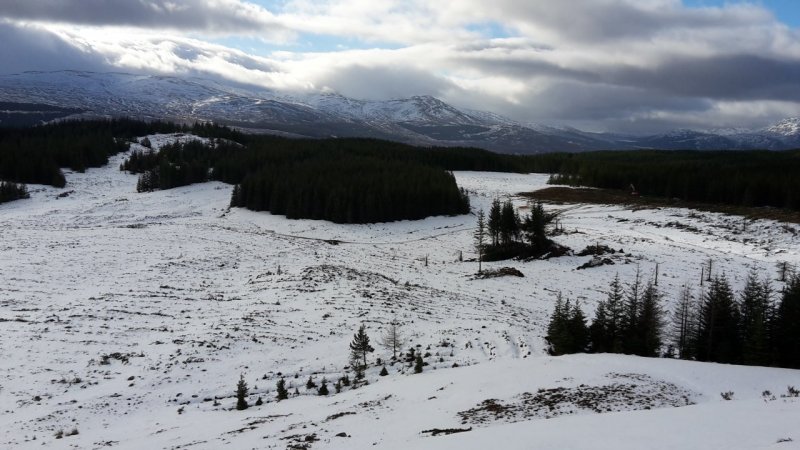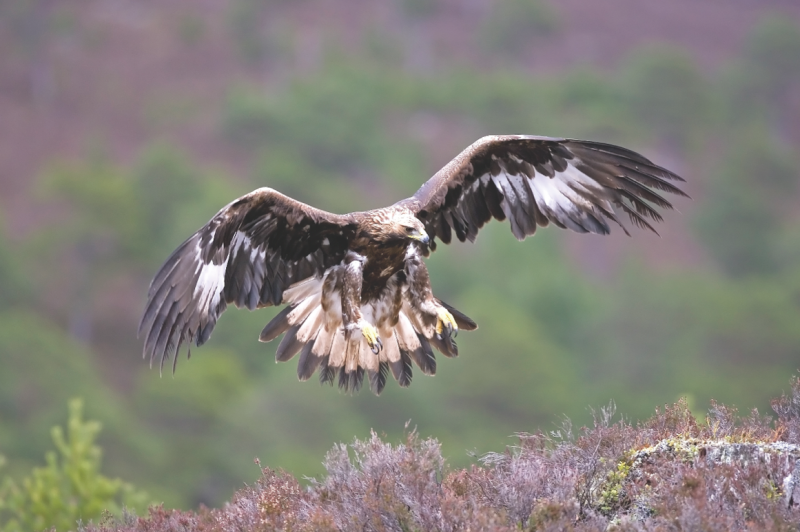The first signs of spring
Dundreggan is a busy place this morning with some ornamental conifers being felled in the Keeper’s Cottage Garden plus a new wood-burning stove being fitted in the Cottage. We’re hoping to bring down the heating bills there in the long-term, as well as providing a bit of real fire homeliness for Long-Term Volunteers and others who use the place. It’s a cool, grey day today – a contrast to some of the fantastic wintery weather we had in late January and early February but the melting snow has meant the mire restoration work has been continuing apace. Contractors are reducing conifers planted on deep peat in the Dalchreichart plantation to fragments – a process known as whole tree mulching. Fully funded by SNH’s Peatland Action Fund, the work here is just the start of the restoration of a growing mire habitat. We will need to maintain a high water table in the mulched areas and work hard to remove non-native natural regeneration in the years to come. With a bit of help though, we should see a renewal of the growing surface of the bog in due course, helping to lock carbon out of the atmosphere and restoring a wonderful habitat to its former glory.

From the office at Dundreggan, I heard a mistle thrush singing this morning from the top of a nearby tree. This is classic weather for them. Sometimes known by their old country name of “storm cock”, they are in the habit of singing in late winter or early spring from the top of a high tree when the weather is inclement. It’s a rather sweet blackbirdy sort of song but comes in short bursts with a second or two gap between phrases. This year I plan to carry out a series of bird monitoring surveys across Dundreggan to get a good baseline on the breeding birds here. Hopefully, if they are repeated in years to come we will be able to see how the bird community changes as our woodlands develops. I’m especially excited as this year is National Golden Eagle Census year when a whole host of organisations and individuals make a concerted effort to establish the size and distribution of the Scottish golden eagle population. We’ve already had eagles seen on several occasions at Dundreggan this year, so we’re hoping they may stick around to breed!

Another target species for us will be black grouse, a species known for its spectacular gatherings of breeding males at defined “leks” in April and May, strutting their stuff to show off to the girls. A good way to track the population is by counting how many birds turn up to these leks in the early morning. And I mean early – the key time is the two hours before and after sunrise, meaning a 5am start in May!
I suspect we've still got some more wintery weather to come but I look forward with relish to the lengthening days and further unfolding of spring in this beautiful glen.

